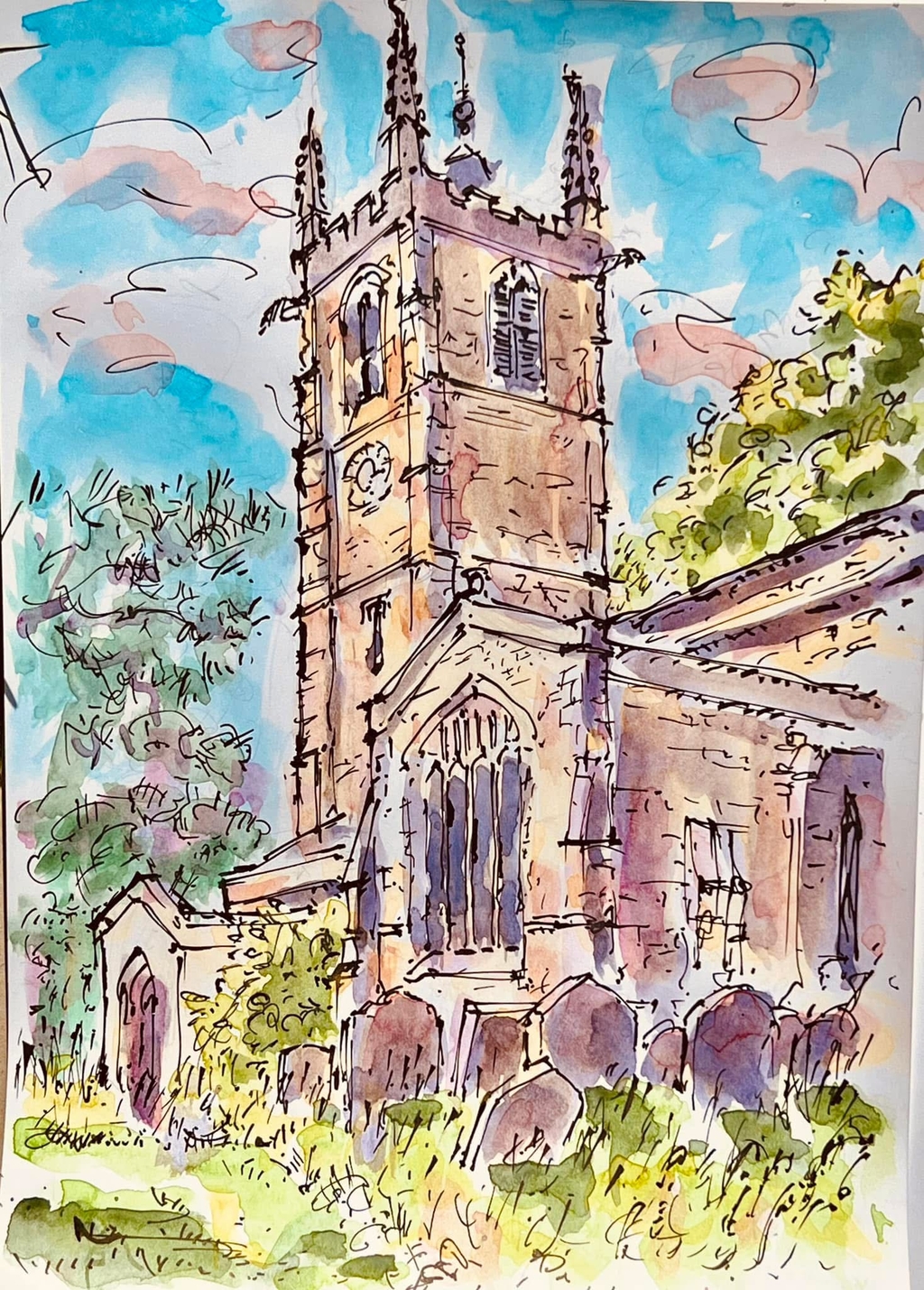Gretton’s oldest church, St James the Great, is a Grade I listed building on the northern edge of the old Rockingham Forest. It sits atop a limestone ridge overlooking the River Welland.
Much of the church was renovated in 1893, but evidence of a much older church can be readily seen. According to the Domesday Book, the royal manor of Gretton (Gretone) comprised over 20 households, had a priest, and was worth around £20, its economy based on farming – arable and grazing - and a mill.
The oldest part of today’s church is the Norman nave, built very early in the 12th Century, with extensions to create the north and south aisles constructed a few decades later. If you stand in the current nave and look above the arches on both sides you can still see the remains of some of the original windows embedded in the walls. Despite later modifications (for example raising the chancel floor in the 18th Century in order to put in a vaulted roof over a crypt for the Hatton family, and extensive 19th Century restoration) older features can still be made out including a mediaeval wall painting next to the grand window at the east end of the 14th century chancel.
Most of the church is built from local limestone rubble, often rendered, but the 15th century tower was built into the west end of the church from ironstone blocks, and linked to the nave by a, then new, arch. The tower is said to be the highest church tower in Northamptonshire
There are many C17 and later memorials in the chancel, for example to Leigh and Henry Clarke (1657 and 1664), the ‘Ladies Hatton’ (1684) and various other members of the Hatton family, who owned nearby Kirby Hall. Look out also for mention of James Chappell's heroism.
Walking around the churchyard, there are fantastic views across the Welland valley, with its ridge and furrow fields and medieval remains, including fishponds and rabbit warrens. Within the chuchyard, which is carefully maintained to be a haven for wildlife, there are some historic graves and plenty of places to sit and contemplate both human and natural history. For more details, you can download:
A rather longer guide to the church, churchyard and the role of St James's in the history of the village here.
And a history of some of the clergy at St James's here
And the mystery of the history of our wonderful church organ here







